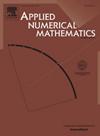Structured ramp secret sharing schemata over rings of real polynomials
IF 2.2
2区 数学
Q1 MATHEMATICS, APPLIED
引用次数: 0
Abstract
Two new ramp secret sharing schemata based on polynomials are proposed. For both schemata, the secret is considered to be a polynomial created by the dealer. The participants are separated into , groups, that are specified by the dealer's levels for and each level , , is separated into subsets. The shares of the secret are given to participants in the form of polynomials. For the first proposed scheme, the dealer creates ℓ polynomials one for each level. Specific participants from every subset of each level have to cooperate all together in order to construct the polynomial of their level. Next all the authorized participants cooperate for computing the greatest common divisor of the polynomials in order to retrieve the secret. In the second scheme, the authorized participants cooperate per two levels using a bottom-up procedure. In both schemata the greatest common divisor can be evaluated by implementing numerical linear algebra methods, and precisely factorization of matrices of special form such as Sylvester matrices. The triangularization of these matrices can be obtained by exploiting their special structure for the reduction of the required floating point operations. The innovative idea of the paper at hand is the use of real polynomials in secret sharing schemata. This is particularly useful since the greatest common divisor can always be computed with efficient accuracy using effective numerical methods. New theoretical results are proved and provided that support the error analysis of our approach.
实多项式环上的结构化斜坡秘密共享方案
本文章由计算机程序翻译,如有差异,请以英文原文为准。
求助全文
约1分钟内获得全文
求助全文
来源期刊

Applied Numerical Mathematics
数学-应用数学
CiteScore
5.60
自引率
7.10%
发文量
225
审稿时长
7.2 months
期刊介绍:
The purpose of the journal is to provide a forum for the publication of high quality research and tutorial papers in computational mathematics. In addition to the traditional issues and problems in numerical analysis, the journal also publishes papers describing relevant applications in such fields as physics, fluid dynamics, engineering and other branches of applied science with a computational mathematics component. The journal strives to be flexible in the type of papers it publishes and their format. Equally desirable are:
(i) Full papers, which should be complete and relatively self-contained original contributions with an introduction that can be understood by the broad computational mathematics community. Both rigorous and heuristic styles are acceptable. Of particular interest are papers about new areas of research, in which other than strictly mathematical arguments may be important in establishing a basis for further developments.
(ii) Tutorial review papers, covering some of the important issues in Numerical Mathematics, Scientific Computing and their Applications. The journal will occasionally publish contributions which are larger than the usual format for regular papers.
(iii) Short notes, which present specific new results and techniques in a brief communication.
 求助内容:
求助内容: 应助结果提醒方式:
应助结果提醒方式:


